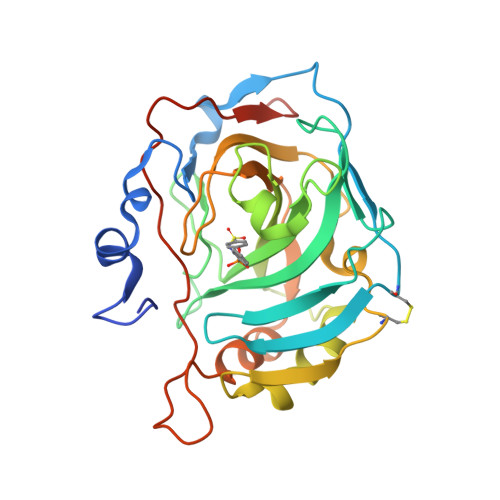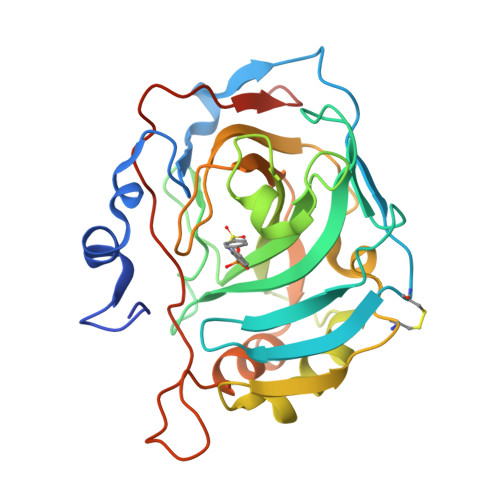Phenyl(thio)phosphon(amid)ate Benzenesulfonamides as Potent and Selective Inhibitors of Human Carbonic Anhydrases II and VII Counteract Allodynia in a Mouse Model of Oxaliplatin-Induced Neuropathy.
Nocentini, A., Alterio, V., Bua, S., Micheli, L., Esposito, D., Buonanno, M., Bartolucci, G., Osman, S.M., ALOthman, Z.A., Cirilli, R., Pierini, M., Monti, S.M., Di Cesare Mannelli, L., Gratteri, P., Ghelardini, C., De Simone, G., Supuran, C.T.(2020) J Med Chem 63: 5185-5200
- PubMed: 32364386
- DOI: https://doi.org/10.1021/acs.jmedchem.9b02135
- Primary Citation of Related Structures:
6SDS, 6SDT - PubMed Abstract:
Human carbonic anhydrase (CA; EC 4.2.1.1) isoforms II and VII are implicated in neuronal excitation, seizures, and neuropathic pain (NP). Their selective inhibition over off-target CAs is expected to produce an anti-NP action devoid of side effects due to promiscuous CA modulation. Here, a drug design strategy based on the observation of (dis)similarities between the target CA active sites was planned with benzenesulfonamide derivatives and, for the first time, a phosphorus-based linker. Potent and selective CA II/VII inhibitors were identified among the synthesized phenyl(thio)phosphon(amid)ates 3 - 22 . X-ray crystallography depicted the binding mode of phosphonic acid 3 to both CAs II and VII. The most promising derivatives, after evaluation of their stability in acidic media, were tested in a mouse model of oxaliplatin-induced neuropathy. The most potent compound racemic mixture was subjected to HPLC enantioseparation, and the identification of the eutomer, the ( S )-enantiomer, allowed to halve the dose totally relieving allodynia in mice.
Organizational Affiliation:
Department of NEUROFARBA, Pharmaceutical and Nutraceutical Section, University of Florence, Via Ugo Schiff 6, 50019 Sesto Fiorentino, Italy.




















